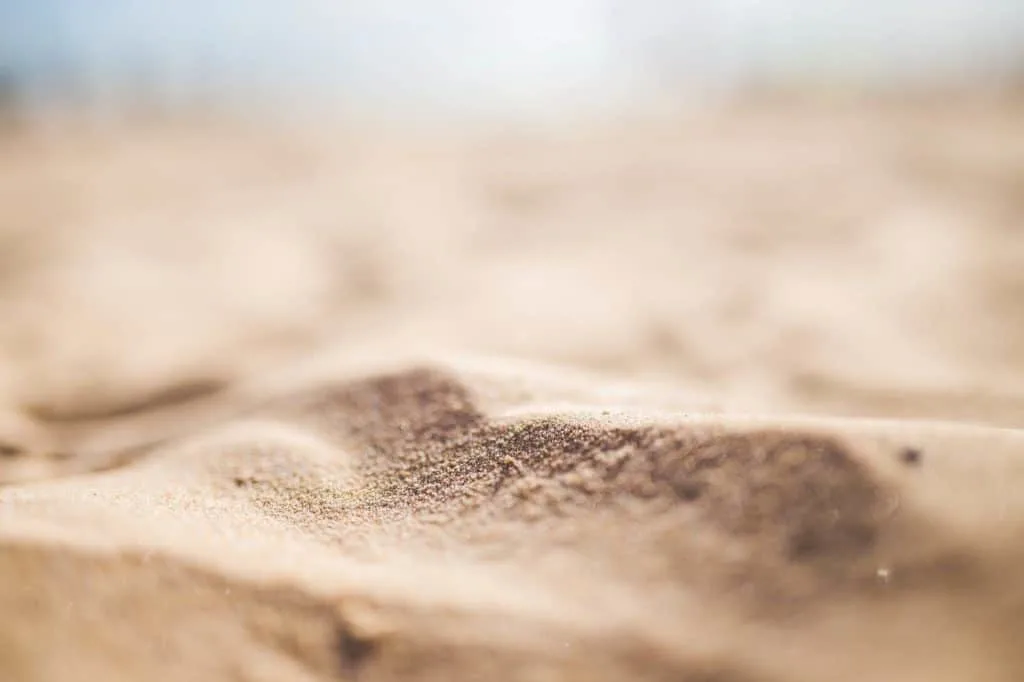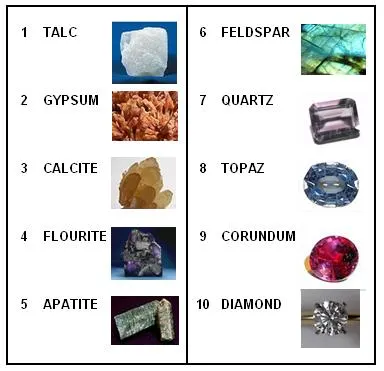As an Amazon Associate, I earn from qualifying purchases with no additional costs for you.
Sand is the abrasive material present when rocks are naturally tumbled in nature. However, this might not be an advantage for artificial rock tumbling. Truthfully, have you ever considered using sand for tumbling your rocks?
Rock tumbling with sand is more time-consuming than using silicon carbide grit. Sand is mostly comprised of quartz with a hardness of 7 on the Mohs scale, the same hardness as most rocks you can tumble. Therefore, sand may only be used to tumble softer materials than quartz or as a pre-grit.
Sand has its benefits if you know when and how to use it, and the best part is that it’s free. Today, I will present what kind of rocks you can tumble with sand, detailed costs of using sand in rock tumbling vs. carbide grit, and how to make sea glass with sand.

If you want to check out the best tumbling grits, you can find them by clicking here (Amazon link).
Sand vs Silicon Carbide Grit
The greatest benefit of sand is that you can get it for free if you live close to a beach. When you think about it, sand is the natural abrasive material when rocks are tumbled in nature.
However, things change when it comes to putting sand into a rock tumbler, and here is why:
- Hardness Level
The most commonly tumbled materials, agate, jasper, varieties of quartz, petrified wood, aventurine, or tiger’s eye, all have a Mohs Scale hardness of 7.
Most natural sands are composed of quartz, ranking 7th on the Mohs Hardness Scale. But why is this a problem? When two materials have the same hardness levels, they are ineffective at cutting one another.

In comparison, silicon carbide grit has a Mohs hardness level of 9+, and, as such, it is a much more effective abrasive. Sand can be used as an abrasive for tumbling agate or jasper; however, it will take much longer.
Additionally, you would need around twice the amount of sand as a substitute grit than if you used silicon carbide grit.
If you wish to test a material’s hardness level, simply place it on a glass plate, add a bit of water, then place another piece of glass over and grind the two pieces of glass together. If the material scratches the glass, then it means it has a hardness level of at least 5.
- Shape Matters
Most natural sands have round grains shaped-particles. In comparison, silicon carbide grit particles are angular in shape. Because of this angular shape, it is much more effective at producing abrasion that smooths and rounds tumbling rough into polished stones.
Sand might also work; however, it will take longer, and the rocks might end up sharper or deformed.
- Electricity Cost Efficiency
Though you can get sand for free from the beach or other places, that doesn’t necessarily mean you won’t have to give a penny in another way. You have to remember that the total cost of the tumbling includes electricity.
In most cases, using sand as a substitute would require at least two times more tumbling than using silicon carbide grit. This inevitably leads to more wear and tear on your machine and, ultimately, lower quality results.
| Tumbler | kWh per day | kWh per month |
|---|---|---|
| Thumler’s MP-1 | 0.56 | 16.79 |
| Thumler’s A-R1 | 0.99 | 29.62 |
| Thumler’s A-R2 | 0.99 | 29.62 |
| Thumler’s A-R6 | 0.99 | 29.62 |
| Thumler’s A-R12 | 0.99 | 29.62 |
| Thumler’s Model B | 1.30 | 39.12 |
| Thumler’s UV-10 | 1.90 | 57.02 |
| Lot-O-Tumbler Single | 2.59 | 77.77 |
| Lot-O-Tumbler Twin | 2.59 | 77.77 |
However, an exception might be when tumbling very soft materials such as obsidian, marble, fluorite, and calcite. It might work if you find the right type of sand with the proper particle size. Some use sand to place a frosted finish on tumbled glass or as a pre-grit.
Thus, sand can only be used in tumbling processes if it is harder than polished rocks. Sand sometimes works better than silicon carbide grit, but only if you understand where a softer grit produces superior results, like the example below.
TIP: Rock tumblers use various types of grit in the multiple stages of the rock tumbling process to shape, smooth, and polish the stones. Find out the complete guide on tumbling grit in the article below:
Rock Tumbling Grit: Usage, Types, Disposal & Substitutes
Sand Can Be Better
So, how can sand be a better alternative grit than silicon carbide? Well, you can make sea glass with sand. Sea glass is often found at the beach as it results from broken glass that was tumbled in the waves of the ocean.
If you want to produce an abraded surface similar to natural sea glass, simply put broken glass in your tumbler and then add sand.
Sand is softer than silicon carbide grit, and thus, it cuts the glass very differently. All it takes is a little imagination; you can do many things with sand.
For example, you can tumble jade with sand. You can create a jade slick with sand if you find a rock that mixes jade and serpentine.
Rocks with a mixture of jade and serpentine are found in nature, with the softer serpentine mostly worn out and the harder jade having a dull polish.
If you decide to use sand instead of silicon carbide, the sand will act more aggressively towards the serpentine rather than the jade. The result will be a beautiful translucent jade slick, something you cannot achieve with silicon carbide.
You might also use sand as a pre-grit. Sand may also be a better variant when tumbling very soft materials such as obsidian, marble, fluorite, and calcite.
BTW: Do you want to know more about rock and mineral identification? The books listed below are the best ones you can find on the internet (Amazon links):
- Smithsonian Handbooks: Rocks & Minerals
- Gemstone & Crystal Properties (Quick Study Home)
- Ultimate Explorer Field Guide: Rocks and Minerals (National Geographic Kids)
Can you use sand as a pre-grit?
Though it might not be a good idea to use sand to tumble rocks, it might be a good idea to use it as a pre-grit media. You can use sand to partly clean rocks or rocks that have been sitting outside for a while and gathered organic mung.
However, this tumbling process shouldn’t exceed a couple of hours.
For example, 4 4-5Tbsp of sifted beach sand or bulk quartz sand, which is usually available at craft stores, can help you take the sharp edges off of your stones, but do not leave it for long as it would round off and break down quickly with most rocks.
Using sand with water, or even just water, will do some degree of rounding. However, it is far from what you would achieve from a 60/90 silicon carbide.
Some people use sand in the pre-grind stage before using the first 60/90 stage to save up on the grit. Thus, it is best only to use sand in the pre-grind stage, at most.
TIP: Do you know the beaches can be full of amazing and beautiful gemstones? Yes, you can find more than just the sand there. Check out which gemstones come from the ocean here:
Which Gemstones Come From The Ocean? Corals, Pearls, & more!
FAQs about Tumbling Rocks with Sand
Still did not find the answer to your answers about tumbling rocks with sand? Find frequently asked questions in the section below:
Can you use regular sand in a rock tumbler?
You can use regular sand in a rock tumbler. However, the sand particles are round grains, making them less effective at producing abrasion that smooths and rounds, tumbling rough into nice polished stones.
Thus, using regular sand in your rock tumbler will take much more time and energy than silicon carbide grit, for example. You should always consider that the softer the grit, the smaller the scratches on your rocks.
Can you use beach sand in a rock tumbler?
Beach sand can be used in a rock tumbler. However, it must be sifted. After the sifting process, beach sand can help you remove the sharp edges of your stones, but do not leave it for too long. Sifted beach sand is also available in craft stores.
You also should consider what kind of beach sand you are using. For example, black sand is finer than regular sand but has a lot of iron. Blasting sand might be a good idea to clean stones, but using it to polish stones wouldn’t work.
Can sand damage or break my rock tumbler?
Using sand to tumble your rocks will eventually lead to wear and tear on your rock tumbler. This is because sand has a Mohs scale hardness of 7, and like most rocks, you can tumble.
Materials of equal hardness levels are ineffective at cutting one another; thus, you must use your rock tumbler for longer periods. This inevitably results in more wear and tear; eventually, the rock tumbler might break.
Can I use sand and silicone grit together?
Using silicon carbide grit and sand together is not a good idea. However, you can use them separately. If you wish to save on your grit, you can use sand only as a pre-grit, after which you can switch to a 60/90.
You can save up on your 60/90 grit and use the free sand. However, be careful of what sand you are using, make sure it is sifted, and don’t leave it for long periods, as it can affect the quality of your rocks.
TIP: So you already know how and when the best time to use sand for tumbling is. Tumbler grit is a better option for rock tumbling, but can you reuse tumbler grit? Find out the complete answer in the article below:
Can Rock Tumbler Grit Be Reused? You Should Know This
